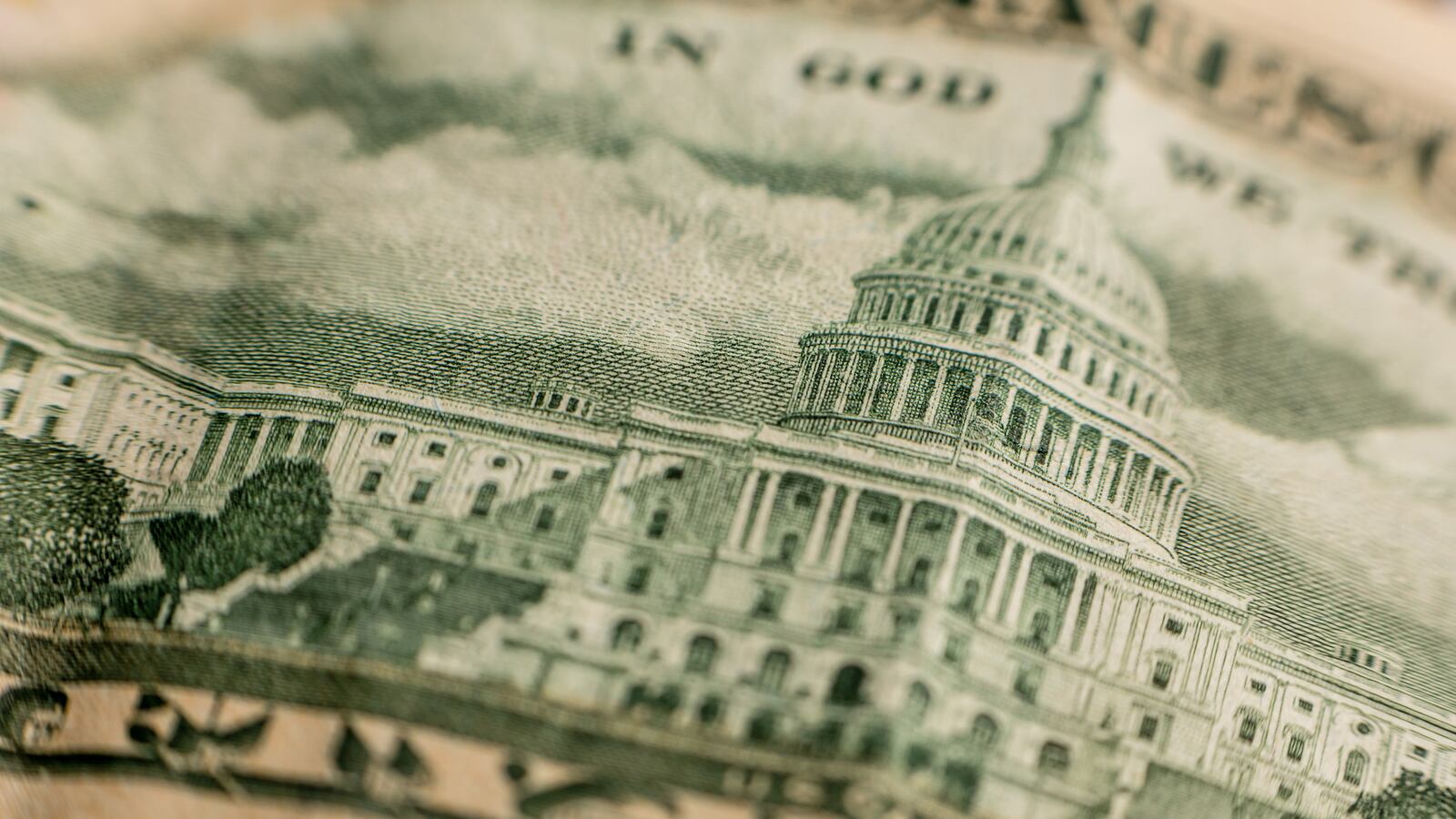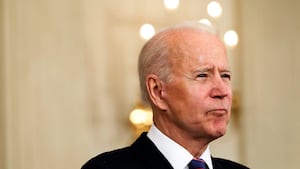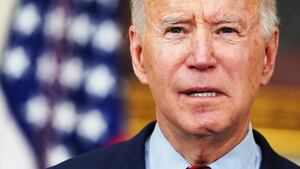It’s a modern-day gold rush in Washington as special interests converge on the Congress and lawmakers jockey for their share of member-directed spending, formerly known as earmarks, that allows members to claim goodies they can bring home to the voters.
These congressional favors, back and rebranded after a 10-year ban prompted by wretched excess, a misuse of taxpayer money, and outright criminal corruption are expected to smooth the way forward in a new era of deal-making for lawmakers and lobbyists alike to get a piece of Joe Biden’s $2 trillion infrastructure plan.
“Member-directed is the new vernacular,” says Paul Equale, a former Democratic lobbyist. “It’s about bringing home the bacon and getting credit for it.” That simple premise is at the heart of a representative democracy, but bridges to nowhere and golf courses with no redeeming social value ended the practice. Only a third of today’s House members and fewer than half the senators were around for those glory days of personalized largesse.
Not since the Reagan administration pulled off a massive overhaul of the federal tax code in the ’80s has there been the potential for so much new money entering the system. The Reagan-era lobbying onslaught was brilliantly captured in the 1987 book Showdown at Gucci Gulch, which took its name from a quip made by then Senate leader Bob Dole. Leaving a closed-door markup session on the tax legislation that had stretched through the night and into the early morning, he saw what at that hour would normally be an empty hallway packed with lobbyists. “They’re Gucci to Gucci,” he said, a play on their expensive loafers. From then on, the corridors outside the tax-writing committees have been known as Gucci Gulch.
“Back then, you could watch senators going up to (Finance Committee Chairman) Bob Packwood and handing little pieces of paper to him on the Senate floor basically saying, ‘Here’s the deal I’d like you to get into the bill.’ It was a retail vote-buying effort and every single member got in on the action,” remembers Alan Murray, co-author with Jeffrey Birnbaum of Gucci Gulch, written when they were both with The Wall Street Journal and covering the Reagan tax overhaul. (Murray is now CEO of FORTUNE Media, and Birnbaum heads public relations at the BGR group, a major lobbying and communications firm.)
A lot of big, profitable companies at the time were paying little or no taxes, so the politics allowed the closing of loopholes for big business that in another time Republicans would have resisted. Reagan lowered tax rates overall for everybody, and his rewrite of the tax code created winners and losers that divided the business world but won praise from Democrats as well as Republicans.
Biden’s infrastructure plan, aside from the battle over how to pay for it, is even more far-reaching than Reagan’s tax reform. “It’s hard to think of a piece of legislation in our lifetimes that is going to touch as many businesses,” says Murray, ticking off the massive expenditures on broadband, green energy, and hundreds of billions in R & D that potentially impact all kinds of businesses, plus roads and bridges and all the obvious stuff. “In that sense, it is like the ’86 tax bill in the way it twisted around the tax code. What’s different, I don’t think businesses know where the playing field is.”
He cites as an example the recent earnings report by Pat Gelsinger, the new CEO of Intel, a leader in the semiconductor industry, where he publicly committed to building two new chip plants in Arizona. “What no company has done for years,” Murray exclaims, suspecting Intel’s announcement is “an early play” for government money. Biden has issued the challenge that in order to compete with China, his plan will funnel money into semiconductor companies to build factories in the United States.
For Biden to succeed in passing the infrastructure proposal dubbed the American Jobs Plan, every Democrat has to vote for the bill while every Republican is likely to vote against it. “Other than Manchin, I don’t know who you negotiate with,” says Murray. “It’s not like ’86, where everybody had leverage.”
Strictly speaking, he’s right, but there’s talk of splitting off a narrowly focused bill on roads and bridges that could attract GOP support. Senate Republicans will vote this week on whether individual senators can use earmarks despite the permanent ban the GOP caucus voted for in 2019. Democrat Patrick Leahy, who chairs the Senate Appropriations Committee, has indicated he will go ahead with earmarks regardless, prompting Republican Richard Shelby to do a little math, saying, “If they gave us 4 billion in the Senate for the Republicans… and we don’t take it, then they’ll get 8.”
The distribution of the largesse in the American Jobs Plan will be divided equally in the 50-50 Senate, and while it is a significant amount, earmarked funds are just 1 percent of the federal budget according to the Congressional Research Service.
In the tribal world of today’s congressional politics, earmarks may play a lesser role in securing votes but when it comes to distributing the considerable funds for everything from roads and bridges and water projects to rural broadband and an expanded electrical grid, just about every member of Congress will want a piece of the action. This member-directed spending can help sell the bill and create a political environment favorable to a lawmaker’s re-election. Republicans who vote against the legislation could still claim credit for bringing home a particular project.
In a less partisan world, the Reagan White House put together a coalition one-by-one and all those tax changes that added up to reform created winners and losers and potential areas of compromise and agreement. Two journalists with the Philadelphia Inquirer, Donald Bartlett and James Steele, won a Pulitzer Prize for listing the hundreds of side deals that made their way into the 1986 tax reform legislation. When you added them together, the overall number was small relative to the size of the legislation, but they were a critical lubricant in securing votes.
Former House Minority Leader Dick Gephardt told The Daily Beast that the budget votes of the 1990s that raised taxes and cut spending were “the toughest votes I ever worked, and earmarks were a vital part of putting those coalitions together.” He worries people will give up on democracy if Congress can’t deliver, and earmarks can help get the necessary votes, “even if it’s just five votes, or maybe one vote.”
Before they fell into disrepute, earmarks were a way of life for lawmakers. “When we got one, we put out a press release. We were very proud,” former North Dakota Rep. Earl Pomeroy told The Daily Beast. “No one thought about North Dakota in the House of Representatives every day except me, and I felt it was really a central part of my job.” In 2010, Pomeroy was the top House recipient per capita of earmarks, securing 50 projects worth $148.4 million—which earned him a top spot in the “pig book” then published annually by Citizens Against Government Waste.
But the party came to an abrupt end. After the Republicans took the House with a large majority in 2010—Pomeroy was among those to lose their seats—they banned earmarks, a long-overdue correction precipitated by the lobbying scandals initiated by Jack Abramoff, who was dubbed “Casino Jack,” and a lucrative kickback scheme employed by former California Republican Duke Cunningham that yielded him $2.4 million in bribes from defense contractors. A former Navy “top gun” pilot in Vietnam and a defense subcommittee chairman, Cunningham drew up a “bribe menu” that spelled out exactly what he expected in order to grease the skids for a defense contract. It was appalling, and Cunningham spent more than seven years in prison.
Pomeroy anticipates intense fights over how the substantial resources in the American Jobs Plan will be distributed, but says, “It will not be the opening gun of the lobbyists’ free-for-all.” House Democrats and House Republicans voted separately in February and March respectively to bring back earmarks, and the Senate leadership in both parties is expected to do the same.
To guard against a free-for-all, the House Appropriations Committee has put several guardrails in place, limiting earmark requests to 10 per member, prohibiting earmarked money from going to for-profit ventures, capping the sums involved, and vetting requests for financial conflicts and ethical violations.
Even so, says Pomeroy, “to go from bribe cards to nothing is a foolish overreaction.” And today a lot of lawmakers agree. The Democratic lobbyist Paul Equale points to a book on his shelf, Honest Graft, which takes its title from Tammany Hall politician George Washington Plunkitt, who described honest graft as the simultaneous pursuit of one’s party, state, and self-interest. Sanitizing politics will never work, says Equale, and while we may be having the same conversation in another decade about wretched excess and corruption, the deals struck in the meantime to potentially push legislation through a gridlocked Congress are worth the risk.
“All these high-toned academic institutions are going to go hammer and tong to get this R & D money,” says Equale, who points to an auto industry poised to make electric cars convenient and affordable with government help to set up charging stations. “People are waiting for the technology and the politics to catch up with the demand, and this old white guy is going to do it. Behind the face of kindly Uncle Joe, these guys are playing Big Casino.”







